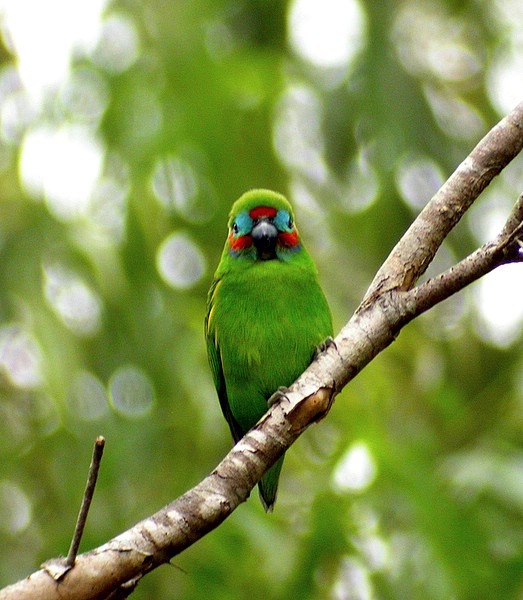- Cyclopsitta diophthalma
Identification
Length is 13-16 cm.
- Green
- Red and blue facial markings
- Males' face more red
- Females' face more silver and blue
Distribution
New Guinea and surrounding islands and Australia from Queensland to New South Wales.
Taxonomy
Subspecies
Eight subspecies are recognized[1]:
- C. d. diophthalma:
- Papuan islands and western New Guinea
- C. d. aruensis:
- Aru Islands and extreme southern New Guinea
- C. d. coccineifrons:
- Eastern New Guinea east of Astrolabe Bay and Central Highlands
- C. d. virago:
- D'Entrecasteaux Archipelago (Goodenough and Fergusson)
- C. d. inseparabilis:
- Tagula Island (Louisiade Archipelago)
- C. d. marshalli:
- Extreme northern Queensland (Cape York Peninsula)
- C. d. macleayana:
- North-eastern Queensland (Atherton Tableland to Townsville)
- C. d. coxeni:
- Easterm Australia (south-eastern Queensland and north-eastern New South Wales)
The three known from Australia are geographically separated, and one of them is endangered.
Habitat
Rainforests, from low riverine to lowland and high altitude. Rarely venture into adjoining eucalypt forests and woodlands.
Behaviour
Diet
The diet includes figs, berries, seeds, and nectar.
Breeding
It excavates its own nesting hole.
Vocalisation
Call: zzzt-zzzt or zeet-zeet.
References
- Clements, JF. 2011. The Clements Checklist of Birds of the World. 6th ed., with updates to August 2011. Ithaca: Cornell Univ. Press. ISBN 978-0801445019. Spreadsheet available at http://www.birds.cornell.edu/clementschecklist/downloadable-clements-checklist
- Wikipedia
- Morecombe, Michael, Field Guide to Australian Birds.
Recommended Citation
- BirdForum Opus contributors. (2025) Double-eyed Fig Parrot. In: BirdForum, the forum for wild birds and birding. Retrieved 27 April 2025 from https://www.birdforum.net/opus/Double-eyed_Fig_Parrot
External Links
GSearch checked for 2020 platform.1




